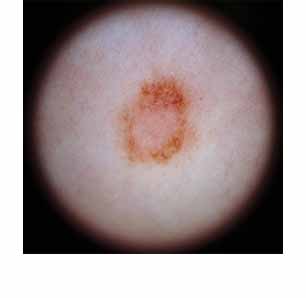The incidence of skin cancers has been increasing over the last decades. Increased exposure to ultraviolet radiation (binge tanning, tanning beds, ozone layer depletion), is possibly one of the causes, but other factors may also be involved (e.g. smoking and genetic predisposition). Fortunately, most skin cancers are non-lethal, especially if they are recognized at an early stage. Most people have numerous spots on the skin. They are almost always harmless if they have not changed. New spots, spots that show rapid growth, have changed in color, shape and other aspects, or show signs of irritation (redness, itch or pain, bleeding easily), should be checked by a specialist. Even for specialists it is sometimes difficult to tell if a spot is benign just by looking at it. Dermoscopy, a magnification technique using polarized light, helps identify patterns associated with certain types of skin tumors, especially melanoma (mole cancer).

skin tumors & biopsy
This technique was made available in our clinic after both doctors completed the training course at the University of Graz in Austria, where it was developed into a useful clinical tool for skin cancer screening. "When in doubt cut it out" is a well-known maxim among skin specialists. It is true that taking a biopsy or removing (part of) the suspicious spot followed by microscopic examination (pathology) is the most reliable way to confirm or rule out a skin cancer. Since it always leaves a scar, however, we always try to avoid unnecessary surgery including biopsies, and when an surgical intervention is inevitable, we do our best to optimize the cosmetic result by deliberately choosing the most appropriate procedure and performing it with utmost care.